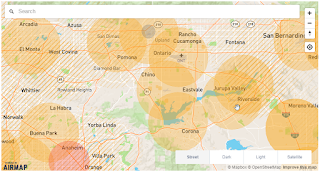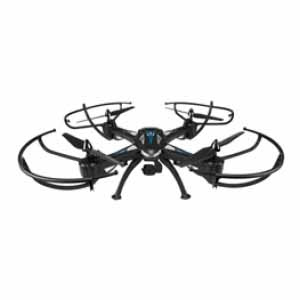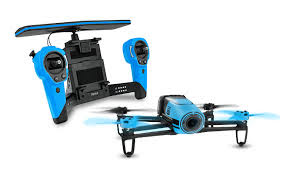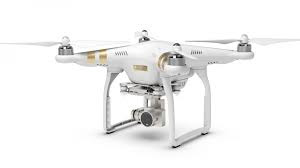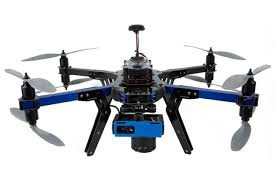Drone (unmanned aerial vehicle, UAV)
A drone, in a technological context, is an unmanned aircraft. Drones are more formally known as unmanned aerial vehicles (UAVs) or unmanned aircraft systems (UASes). Essentially, a drone is a flying robot. The aircrafts may be remotely controlled or can fly autonomously through software-controlled flight plans in their embedded systems working in conjunction with onboard sensors and GPS.
In the recent past, UAVs were most often associated with the military, where they were used initially for anti-aircraft target practice, intelligence gathering and then, more controversially, as weapons platforms. Drones are now also used in a wide range of civilian roles ranging from search and rescue, surveillance, traffic monitoring, weather monitoring and firefighting to personal drones and business drone-based photography, as well as videography, agriculture and even delivery services.
History of drone/UAV use cases
The first generally used drone was a full-size retooling of the de Havilland DH82B "Queen Bee" biplane, which was fitted out with a radio and servo-operated controls in the back seat. The plane could be conventionally piloted from the front seat, but, generally, the plane flew unmanned and was shot at by artillery gunners in training. The term drone dates to this initial use, a play on the "Queen Bee" nomenclature.
In late 2012, Chris Anderson, editor in chief of Wired magazine, retired to dedicate himself to his drones company, 3D Robotics Inc. The company, which started off specializing in hobbyist personal drones, now markets its solutions to photography and film companies, construction, utilities and telecom businesses, and public safety companies, among others.
Flying burrito delivery at Virginia
Tech? Chipotle's testing it.
In late 2013, Amazon was one of the first organizations to announce a plan to use commercial drones for delivery activities. Others have since followed suit; for example, in September 2016, Virginia Polytechnic Institute and State University began a test with Project Wing, a unit of Google owner Alphabet Inc., to make deliveries, starting with burritos produced at a local Chipotle restaurant.
Other common drone applications include drone surveillance and drone journalism, as unmanned aircraft systems can often access locations that would be impossible for a human to get to.
Drone education is also expanding; Embry-Riddle Aeronautical University, long a training ground for the aviation industry, now offers a Bachelor of Science in Unmanned Systems Applications, a Master of Science in Unmanned Systems and an undergraduate minor in Unmanned Aerial Systems.
Drones in the enterprise
A 2016 Business Insider BI Intelligence report forecasted the growth of enterprise drone use to outpace the consumer drone sector in both shipments and revenues by 2021, reaching 29 million shipments worldwide.
PRO+
Content
Find more PRO+ content and other member only offers, here.
E-Handbook
IoT applications pose new problems for developers
E-Handbook
Readying the data center for the IoT era
The integration of drones and internet of things technology has created numerous enterprise use cases; drones working with on-ground IoT sensor networks can help agricultural companies monitor land and crops, energy companies survey power lines and operational equipment, and insurance companies monitor properties for claims and/or policies.
A 2015 experiment in Austin, Texas, showed how drones can potentially "connect the dots" using IoT. A security tech company teamed up with a drone startup to hunt for ZigBee beacons to try to provide an overview of what IoT networks were present in residential and business areas of the city. The companies reported that the results were quick and instructive.
From logistics to agriculture to security, unmanned aerial vehicles and IoT are frequently part of the same discussion; offering a component in ubiquitous connectivity and interactivity.
Drones and security
The rapid adoption of drones has sparked complaints and concerns. From a privacy standpoint, drones have been used by voyeurs and paparazzi to obtain images of individuals in their homes or other locations once assumed to be private. Drones have also been deployed in areas deemed to be potentially unsafe, such as urban areas and near airports.
Margaret Rouse asks:
What do you think is in store for the future of drones?
Join the Discussion
Growth in commercial and personal drones has also created numerous safety concerns, namely midair collisions and loss of control.
Specific concerns about drones flying too close to commercial aircraft prompted calls for regulation, answered in the U.S. by the Federal Aviation Administration (FAA). The FAA has implemented a set of unmanned aircraft rules (Part 107), placing limits on autonomous or semi-autonomous drone operation. Specifically, the FAA mandates, among other things:
Unmanned aircraft must remain within visual line-of-sight of the remote pilot in command and the person manipulating the flight controls of the small UAS or, alternately, within VLOS of the visual observer
Drones must at all times remain close enough to the remote pilot in command and the person manipulating the flight controls for those people to be capable of seeing the aircraft unaided by any device other than corrective lenses
UAVs may not operate over anyone not directly participating in the operation, under a covered structure or inside a covered stationary vehicle
Daylight-only operations, or civil twilight (30 minutes before official sunrise to 30 minutes after official sunset, local time) with appropriate anti-collision lighting
Must yield right of way to other aircraft
